-
Shipping Containers
- Container Parts
- Roof Panel
- Side Panel
- Front End Panel
- Door Panel
- Front Corner Post
- Rear Corner Post (Outer/Inner)
- Cross Member
- Bottom Side Rail
- Top Side Rail
- Door Sill
- Front Bottom Rail
- Top End Rail
- Door Header Upper/Lower
- Door Rail
- Floor Spacer
- Angle
- Top/Bottom End Rail
- Door Edge Member
- Door Sealing
- Door Frame Profile
- Door Lining
- Door Hardwares
- Door Gasket
- Side Panel/Lining
- T-Floor
- Roof Panel/Lining
- Cross Member
- Bottom Side Rail
- Top Side Rail
- Ledge PVC
- Kazoo Drain
- Auto Drain
- Alu Tube
- Auto Drain Center Part
- PVC Drain Pipe
- PVC Plugs f. Drain with Ring and Steel Wire
- Door Screw
- Door Screw Nut
- Door Screw Rubber
- Tapping Screw
- Stainless Blind Rivet
- Lashing Ring
- CSC Plate
- Welding Wire
- Tapping Screw Bit
- Vehicle Parts
- Ship Supplies
- 00. Provisions
- 11. Welfare Items
- 15. Cloth & Linen Products
- 17. Tableware & Galley Utensils
- 19. Clothing
- 21. Rope & Hawsers
- 23. Rigging Equipment & General Deck Items
- 27. Painting Equipment
- 31. Safety Protective Gear
- 33. Safety Equipment
- 35. Hose & Couplings
- 37. Nautical Equipment
- 39. Medicine
- 45. Petroleum Products
- 47. Stationery
- 49. Hardware
- 51. Brushes & Mats
- 55. Cleaning Material & Chemicals
- 59. Pneumatic & Electrical Tools
- 61. Hand Tools
- 63. Cutting Tools
- 65. Measuring Tools
- 69. Screws & Nuts
- 75. Valves & Cocks
- 77. Bearings
- 79. Electrical Equipment
- 81. Packing & Jointing
- 85. Welding Equipment
- 87. Machinery Equipment
- Vehicles
- Lashing Tools
- Logistic Tools
ContainersCIMC Equilink | In-depth Understanding of Iso TankOct 09,2022
ISO TANK (tank container) international standard tank is a stainless steel pressure vessel installed in a fastened outer frame. The inner liner of the tank is mostly made of 316 stainless steel. Most tanks have steam or electric heating, inert gas protection, pressure relief and other optional equipment required for fluid transportation and handling.
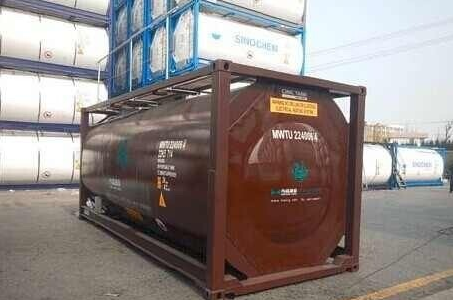
A container used for carrying liquid cargoes such as liquor, oil, liquid food, chemicals, etc. It mainly consists of a liquid tank and a frame. The liquid tank is oval or approximately spherical with double layer structure. Inner wall made of stainless steel; Or made of other rigid materials coated with a layer of epoxy resin to prevent corrosion of liquid cargo. The outer wall is made of thermal insulation material. Generally, there is a round loading port on the top of the tank and an unloading valve on the bottom of the tank. There are several kinds of high pressure liquid tank, low pressure liquid tank, heat preservation liquid tank, liquid tank with heating device. The frame is made of high strength steel and the liquid tank is placed in the middle of the frame. The handling operation, loading, unloading and storage of tank containers need a certain special place, and equipped with special fire safety equipment.
Classification -- The United Nations International Maritime Organization (IMO) and its International Maritime Dangerous Goods Code (IMDG-International Maritime Dangerous Goods) divide such tanks into the following categories: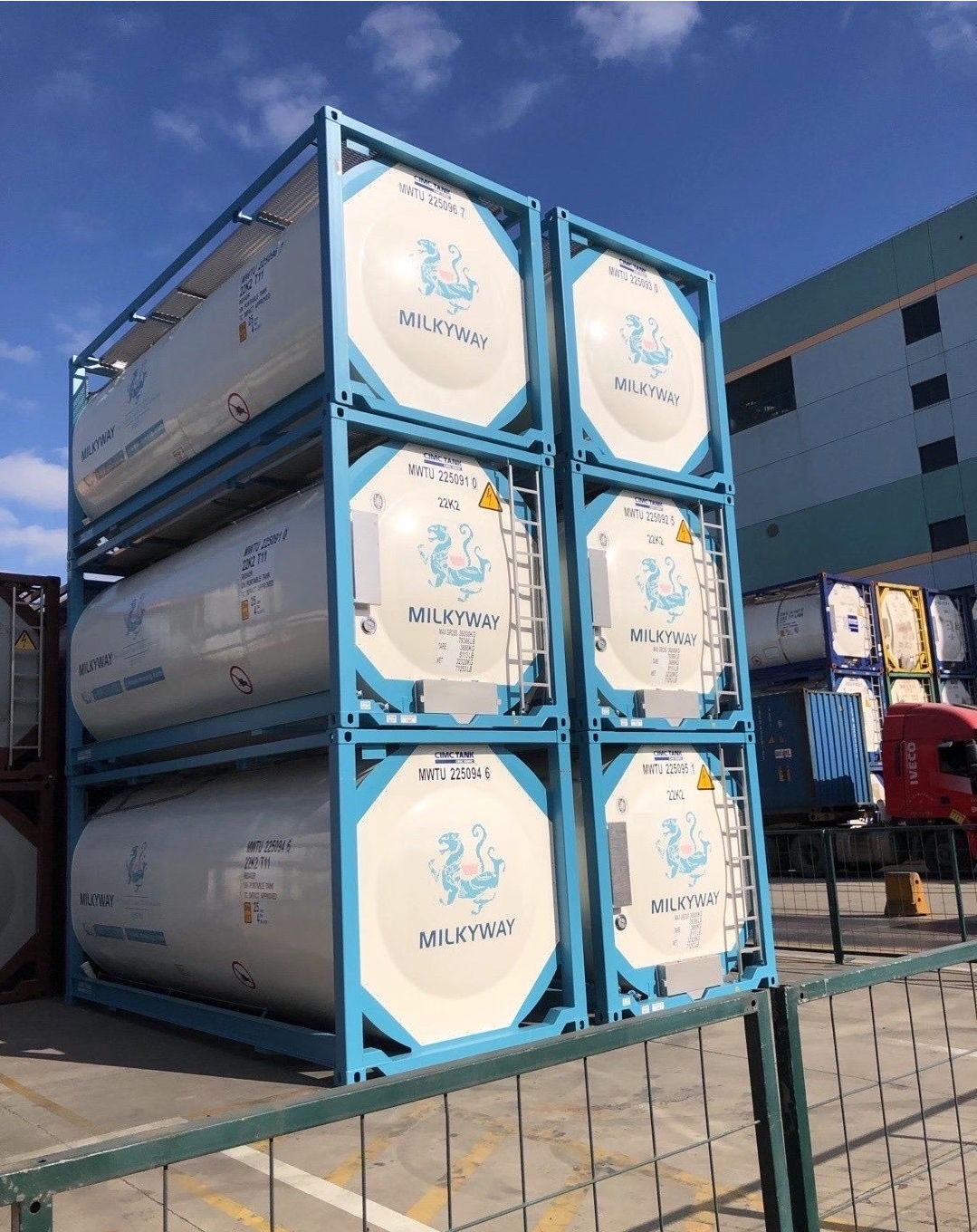
(1) IMO Type 0
Carriage of non-dangerous goods, non-toxic and non-corrosive goods with a flash point exceeding 61°C, goods not on the embargoed list of international executive agencies, liquid food, but alcoholic beverages with a flash point exceeding 21°C or an alcohol content exceeding 25% It should be shipped in an IMO Type 1 tank, unloaded from the bottom of the tank.
(2) IMO Type 1
Dangerous goods tanks, the maximum allowable working pressure is above 1.75 bar, liquid chemicals with a flash point below 0°C, some highly toxic or corrosive chemicals, self-flammable goods, goods that may cause danger when exposed to moisture, Self-oxidizing cargo, liquid cargo whose sealing pressure does not exceed the allowable pressure of the tank, and tanks carrying corrosive and unstable cargoes shall be constructed of special steel and consider the necessary lining, tanks at 65"C The sum of the internal water vapor pressure and the resulting other partial pressures and 0.35 kg/cm² is not allowed to exceed the design pressure of the tank, and the material can be discharged from the bottom or top of the tank.
(3) IMO Type 2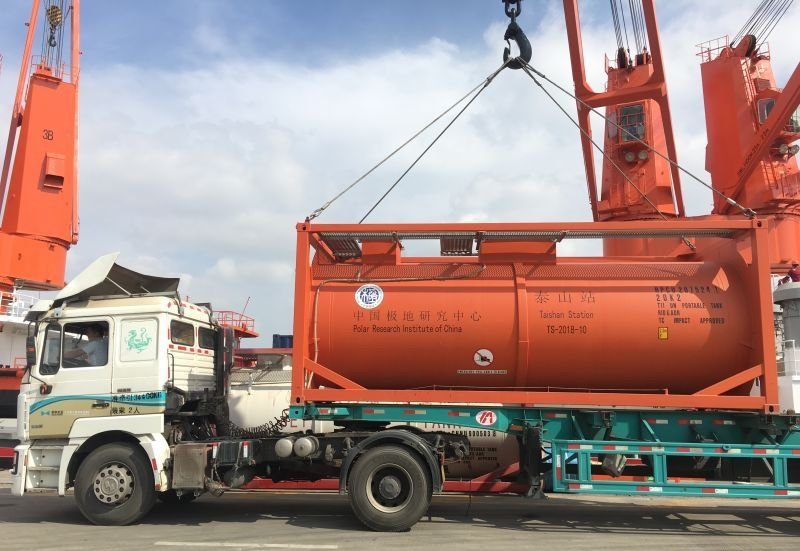
Sub-hazardous cargo tanks, the maximum allowable working pressure is greater than 1.0 bar and less than 1.75 bar, and the shipping flash point is 0°C to 61°C and no other dangerous liquid cargo, certain dangerous, toxic or corrosive chemicals . Liquid cargo whose sealing pressure is lower than 172.4 kPa but does not exceed the allowable working pressure of the tank body shall be discharged from the bottom of the tank.
(4) IMO Type 4
A road tanker with a Type 1 or 2 tank.
(5) IMO Type 5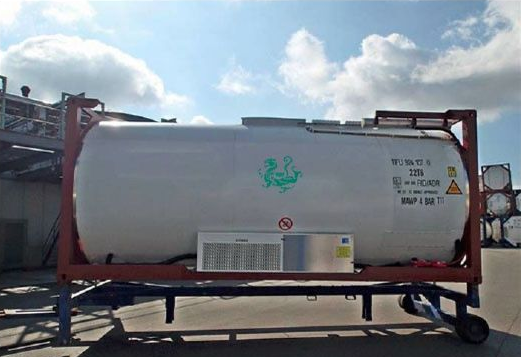
Liquid gas tank containers are used to transport non-refrigerated liquefied gas or less dangerous normal temperature chemicals, which are unloaded from the bottom of the tank.
(6) IMO 6 type
Road tanker with a Type 5 tank.
(7) IMO Type 7
The refrigerated liquid gas tank container with thermal insulation layer is used to transport refrigerated liquefied gas or low temperature liquefied gas and liquid perishable goods that need temperature control, and unload from the bottom of the tank.
(8) IMO Type 8
A road tanker with a Type 7 tank.
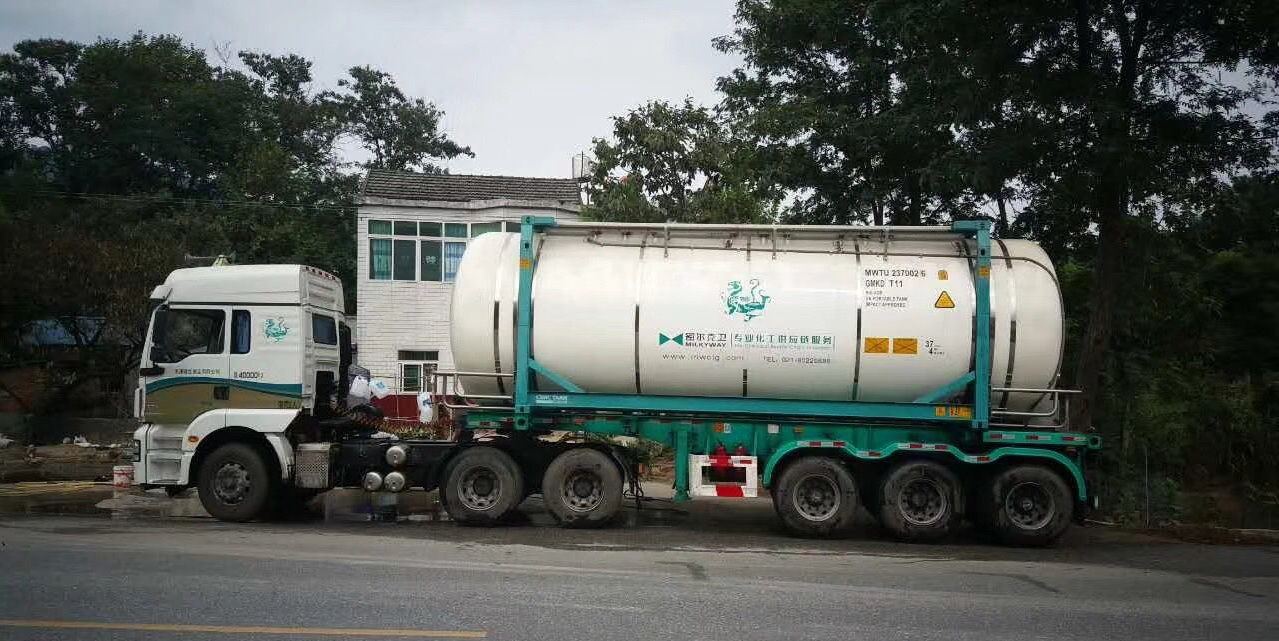
The Portable Tank Guidelines apply to dangerous goods permitted to be transported in Portable Tanks. Each portable tank guide consists of the English letter T and Arabic numerals (T1 to -175). Each guideline represents a technical specification.
Advantages---In addition to all the advantages of containerized transportation, compared with the transportation method of "several drums into a standard dry cargo container", it has many advantages such as economical, fast, safe, environmentally friendly, and beautiful.
Economical:
For example: a 20-foot container (24,000 liters) can hold 45% more liquid cargo than a 20-foot standard dry container with a yard full of drums. That is, "more shipments with the same freight rate", thus reducing the land and sea freight costs for each unit of goods. In addition, the use of canisters saves the cost of disposal of drums for purchase. These are two direct cost savings in shipping.
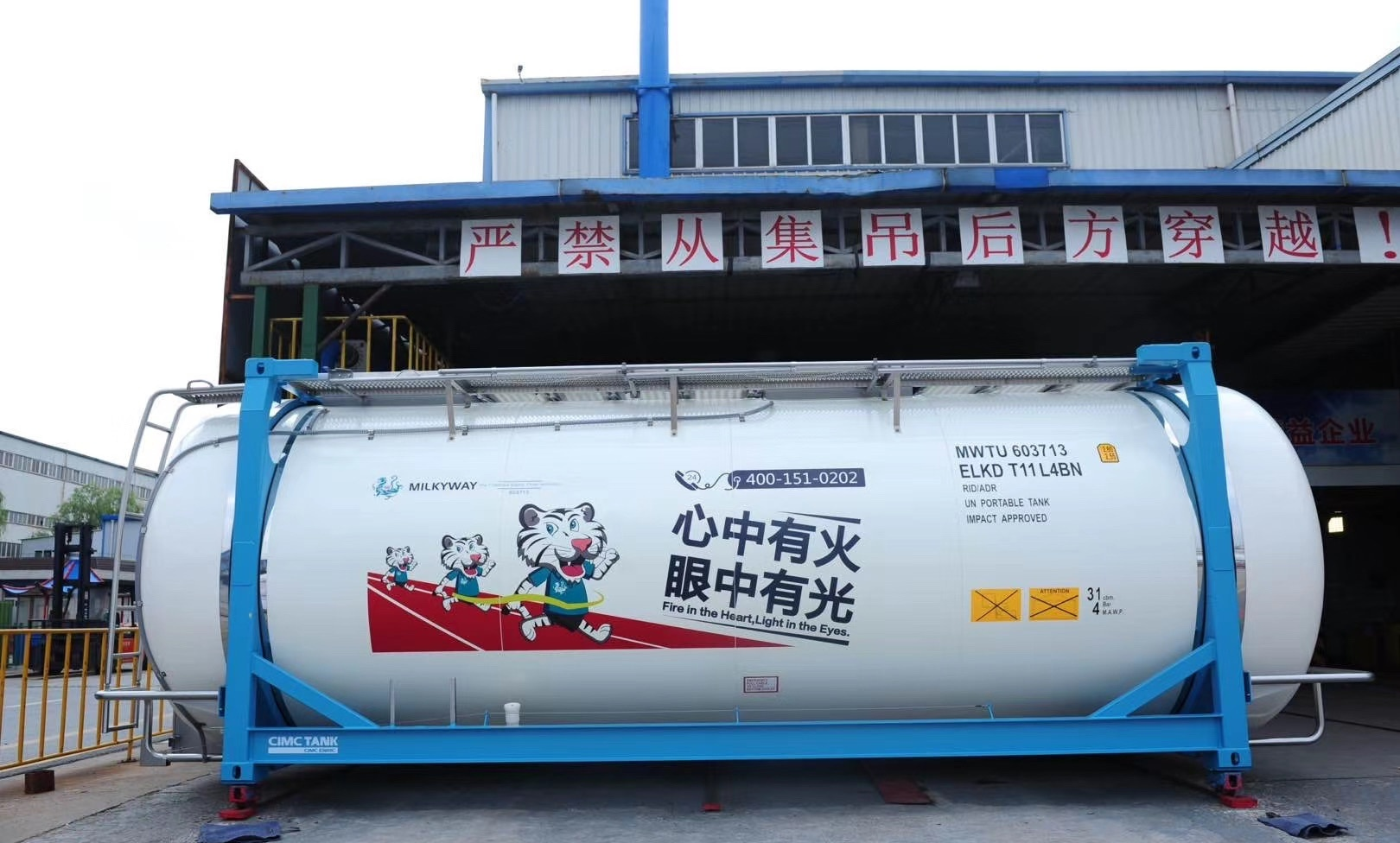
Fast:
The use of tank containers eliminates the costly and time-consuming process of keg flushing, keg loading and unloading. The transportation mode can be directly converted between road, railway and water transportation, the operation is simple and fast, and it can be done in one step. It can truly achieve "door-to-door" transportation.
Increase security:
Tank transport is internationally recognized as the safest way to transport chemicals and food. In the process of distributing and transporting chemicals and food to various places, compared with other methods, this is a unique transportation tool that does not run, leak, leak and avoid the contamination of the goods themselves.
More environmentally friendly, more beautiful, and gives customers a good impression:
Relevant laws in Europe, the United States, Japan and other countries stipulate that some goods must be transported in tanks, and the use of barrels for transport is prohibited. This shows the superiority of the tank container as a means of transportation and its popularity in the world. The China-Europe Railway Express has been in operation for a long time, and it is gradually integrated with the in-depth cooperation in the field of international trade. This method of transportation that does not pollute the environment will surely become popular in China.
Relevant laws in Europe, the United States, Japan and other countries stipulate that some goods must be transported in tanks, and the use of barrels for transport is prohibited. This shows the superiority of the tank container as a means of transportation and its popularity in the world. The China-Europe Railway Express has been in operation for a long time, and it is gradually integrated with the in-depth cooperation in the field of international trade. This method of transportation that does not pollute the environment will surely become popular in China.
CIMC Intermodal Equilink Co., Ltd provides various types of iso tanks, for different types of 40 feet container price and 20 feet container price, you can email us directly (info.equilink@cimc.com) or contact us through the official website (https://www.cimc-equilink.com). Our iso tank container price is very affordable, and the large quantity can be more favorable. We look forward to your call, we will serve you whole heartedly and solve your problems.
Quick Quote
Copyright © 2019 CIMC Equilink - Container Parts

 中文
中文















